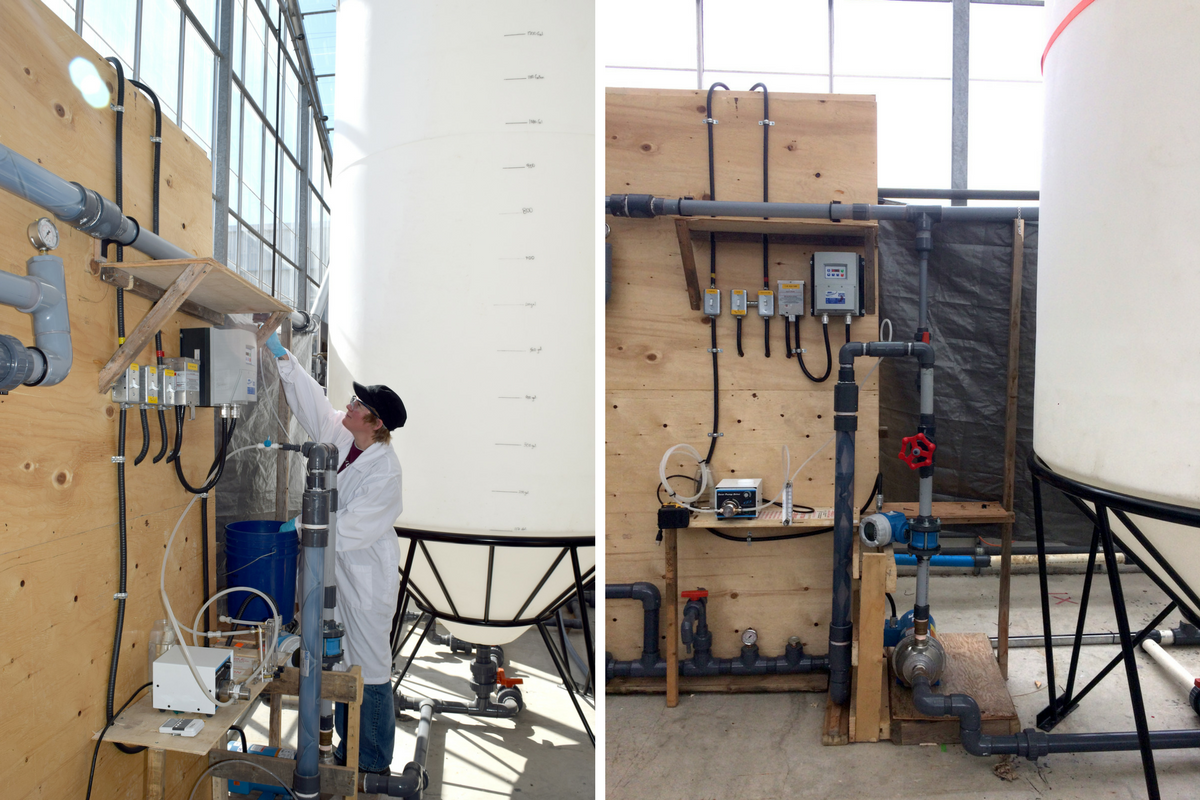Chlorination has been used in water treatment for more than 100 years. But there are growing concerns about its effectiveness in removing certain pathogens and its long-term effects on both humans and the environment.
UV disinfection is very quickly gaining ground on chlorination because it’s effective, environmentally friendly and economical. But, in many ways the technology hasn’t changed since it was introduced in the early 1900s.
UV Pure Technologies, an award-winning Canadian manufacturer of UV water treatment systems, has developed a solution that is self-cleaning against fouling and provides superior performance in hard water, wastewater, and other difficult-to-treat conditions.
And with support from SOWC’s Advanced Water Technologies (AWT) program, which is supported by the Federal Economic Development Agency for Southern Ontario (FedDev Ontario), the company hopes to earn additional environmental validations that will open up new markets.
Complete deactivation of pathogens
In traditional UV water treatment systems, UV light from a lamp protected by a quartz tube passes through water, deactivating pathogens. A control panel powers the system and may also have a basic alert system that notifies operators when the system is not performing properly.
While conventional UV water treatment systems have many advantages over chlorination, they have issues as well. In a single-lamp system, UV rays travel in one direction only; solids in the water block the light in some areas, meaning that pathogens may escape. Maintenance can be difficult as the system needs to be decommissioned for operators to access the components and they may be exposed to harsh cleaning chemicals and wastewater.
UV Pure’s patented Crossfire Technology® improves on standard UV water treatment systems in a number of ways. A combination of dual lamps and reflectors ensure 360-degree radiation of the water passing through the chamber and complete deactivation of pathogens. In fact, Crossfire Technology® can effectively treat water in conditions ten times worse than what traditional systems can handle.
In addition, air-mounted lamps, an automatic quartz sleeve-cleaning system and dual smart sensors make maintenance easier and safer. All this, for the same energy input and cost as a conventional UV system.
Since 1998, more than 18,000 UV Pure systems have been installed in residential, commercial, industrial, public and municipal applications treating wastewater, reuse water, rainwater, and drinking water. Now the company hopes to bring this innovative technology to new markets for larger applications.
To do that, UV Pure needs to do two things. First, prove that its technology handles the increased capacity that larger industrial and municipal operations require. Second, obtain third-party validation that its technology meets global Environmental Protection Agency (EPA) and National Water Research Institute (NWRI) standards. The AWT project will allow UV Pure to achieve both these goals.
A “made-in Canada” validation process
UV Pure’s engineering team is developing new product lines which will accommodate different flow capacities. In collaboration with researchers at Fleming College’s Centre for Advancement of Water and Wastewater Technologies (CAWT), they will create, test and validate the product prototypes and the unique predictive algorithms and dosage equations that ensure correct disinfection rates.
UV Pure is also working with researchers at Queen’s University to explore ways to enhance the self-cleaning wiper mechanism in the new Crossfire products.
Lastly, the CAWT is providing third-party validation of the new products, working with Carollo Engineers Inc., an environmental engineering firm that specializes in water and wastewater facilities. The systems will be validated for potable water, wastewater, reuse, and rainwater treatment to acceptable global EPA and NWRI standards.
The CAWT’s extensive testing facilities allow the systems to be validated under full-scale, real-world conditions. And when it’s complete, the project will be the first “made in Canada” validation process leading to EPA and NWRI validations.
“Traditionally, validating an environmental technology to EPA standards is done in the US,” says Brent Wootton, Associate Vice-President at Fleming College and the UV Pure project’s lead researcher. “This project validates a Canadian environmental technology in Canada – something we’re proud of and that we hope we can continue to offer to other Canadian companies.”
A new horizon
The project is now at the one-year mark. All signs indicate that UV Pure will achieve its goals — a robust, economical, energy-efficient product, ready to be certified and shipped to wider markets.
“Without SOWC, we certainly wouldn’t have been able to complete the project in the two-year time frame,” says Sandro Pecile, Director of Product Engineering at UV Pure.
The funding and collaboration opportunities provided by the AWT program mean that UV Pure can bring its new products to market faster.
Instead of having to approach multiple entities and funders, UV Pure will complete their technology development and validation within one easily managed project, at a single site that’s relatively close to the company’s Toronto offices.
“The focused product development and validation program that we have implemented with support from CAWT and SOWC are enabling us to meet our business and sales goals for expanding the reach of our Crossfire products,” says Kevin Loiselle, Chairman of UV Pure’s Board of Directors. “For an Ontario water technology company to achieve this level of globally-recognized performance validation at home is hugely valuable.”


